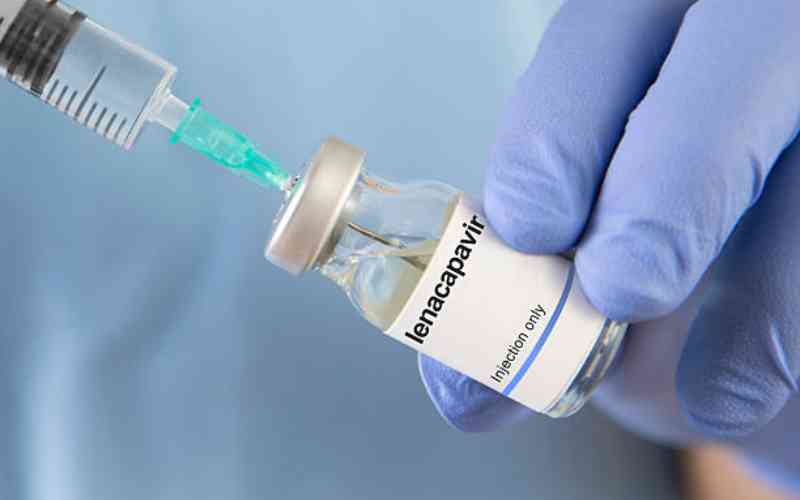
The number of health facilities in the country dropped by 463, according to the Economic Survey 2022 as more private hospitals went out of business.
Data from the Kenya National Bureau of Statistics (KNBS) as documented in the report shows that there were 14,600 health facilities in the country in 2020, down from 14,137 last year.
“This was partly due to the closure of some level two and level three facilities,” says the report released recently.
The report documents that during the review period, level two facilities, which comprised dispensaries, medical clinics and standalone facilities accounted for 77.4 per cent of all health facilities.
As of 2021, the government-owned 85.8 per cent of the dispensaries in the country, while 94.0 per cent of the medical clinics were owned by the private sector. Medical centres, health centres and nursing homes, which constitute level three health facilities, accounted for 16.0 per cent of the total facilities last year.
“Hospitals, which are levels four, five and six, accounted for 6.5 per cent of the total facilities. Level four and level six hospitals increased to 895 and 20 respectively, while level five remained constant at six in the review period,” says the report. A big causality of the overall drop, according to the data, was private facilities, a trend that had not been seen since 2017. Owners of small clinics and medical centres were the most affected.
For example, some 271 private medical clinics do not feature in the 2021 figures drawn from the Ministry of Health in the level two category of facilities. This is the highest drop in the number of private facilities, according to the report.
In 2020, the number of level two private medical clinics was 4,890, a steady growth from 4,427 in 2019; 4,193 in 2018 and 3,902 in 2017. Last year, however, this figure dropped to 4,619. There were 35 fewer private dispensaries as well in this category from 4,818 to 4,902 and 16 fewer standalone facilities.
The other significant drop was in private medical centres that fall under level three facilities, where the figure dropped to 533 from 719 in 2020.

The number of private health centres in this category went up by one to 15, while there were 132 more private nursing homes last year.
Primary care level four facilities, on the other hand, increased by 36 to 409.
The data indicates that there were 508 closures of private facilities against 355 new ones, giving a net of 153 (new facilities) in 2021. Kenya Medical Practitioners and Dentists Council (KMPDC) says the closure of health facilities was dictated by, among other factors, the Covid-19 pandemic.
“The Covid-19 pandemic saw the reduction in the number of patients visiting hospitals and thus led to reduced revenues, forcing some facilities to close down,” said KMPDC Deputy Director Communications and Public Relations Simon Kiraithe in a statement. He said the board also closed 188 facilities for not meeting the stipulated standards. Nairobi had the highest number under this category at 86 followed by the Coast region (53) and North Rift (19).
KMPDC had for long been the sole body for accrediting both health facilities and practitioners until the Health Amendment Act, 2020 came into effect, which mandates the Nursing Council and Clinical Officers Council to register private clinics and their professionals.
“Due to the change in law, most of these professionals migrated their facilities from KMPDC to their respective regulatory bodies,” explained Mr Kiraithe. The closures might also have been affected by the investments the government put into lower-level facilities during the pandemic.
“Following the lessons we have leant from Covid-19, several levels three and level four hospitals have been developed mainly within the informal settlement and this has taken away the pressure from Kenyatta National Hospital and to a greater extent improved the health facilities in this country,” said National Treasury Cabinet Secretary Mr Ukur Yatani during the launch of the Economic Survey 2022 report early in the month.
But despite the closure, the private health sector still leads in the number of hospital beds and cots. “The number of hospital beds increased by 10.1 per cent to 90,417, while the number of hospital cots increased by 9.2 per cent to 9,766 in 2021,” says the report.
“The number of hospital beds in public facilities rose from 37,069 in 2020 to 38,132 in 2021, while hospital beds in private hospitals have been increasing steadily over the past five years, rising to 36,817 in 2021.”
 The Standard Group Plc is a multi-media organization with investments in media
platforms spanning newspaper print
operations, television, radio broadcasting, digital and online services. The
Standard Group is recognized as a
leading multi-media house in Kenya with a key influence in matters of national
and international interest.
The Standard Group Plc is a multi-media organization with investments in media
platforms spanning newspaper print
operations, television, radio broadcasting, digital and online services. The
Standard Group is recognized as a
leading multi-media house in Kenya with a key influence in matters of national
and international interest.











